Mallowwort Malope trifida

ABOUT
Malope trifida, commonly known as annual mallow, is a striking flowering plant. Its general appearance is characterized by a bushy habit with branching stems that are adorned with bright green, hairy leaves. These leaves are heart-shaped with serrated edges, giving them a textured look. The annual mallow is notable for its showy flowers, which have a typical mallow-like shape. Each flower features five broad petals that are often vibrantly colored in shades of pink, red, or white, with intricate veining patterns creating an arresting display. At the center of the flower, a column of stamens protrudes, surrounded by a darker or contrasting color base which can be quite eye-catching. These blossoms are known for their large, cup-shaped form, making them a popular choice for gardeners looking to add a pop of color. The plant has a bushy silhouette that contributes to its ornamental value, with multiple flowers blooming over a long period, usually from early summer until the first frosts of autumn. In addition to its decorative flowers, the annual mallow also produces fruit, which are rounded capsules that contain multiple seeds. These seed capsules may also be of interest in dried flower arrangements or for seed collection. The overall aesthetic of annual mallow is one of casual exuberance, with its lush foliage and large, bright flowers creating a bold statement in any garden setting where it is used as a bedding or border plant. Its appearance is often associated with cottage gardens, and it can provide a natural, yet vibrant, touch to informal planting designs.
About this plant
 Names
NamesSynonyms
Montpellier Mallow, Annual Mallow
Common names
Malope malacoides, Malope grandiflora.
 Toxicity
ToxicityTo humans
Malope trifida, commonly known as Annual Mallow, is not well-documented for toxicity to humans. However, as with many plants, it is generally advisable not to ingest parts of plants that are not known to be edible due to potential unknown toxicities or adverse reactions. In the absence of concrete information on the toxicity of Annual Mallow to humans, it is recommended to err on the side of caution and avoid consumption. If someone ingests this plant and experiences symptoms such as nausea, vomiting, diarrhea, or any other concerning symptoms, they should seek medical attention.
To pets
Annual Mallow (Malope trifida) does not have a well-documented profile regarding toxicity to pets. While there is no specific information on the plant’s toxicity to animals such as dogs and cats, it’s prudent to prevent pets from ingesting plants that are not confirmed to be safe. If a pet consumes parts of the Annual Mallow and shows signs of distress, such as gastrointestinal upset, lethargy, or any unusual behavior, it is important to contact a veterinarian for advice and potential treatment.
 Characteristics
CharacteristicsLife cycle
Annuals
Foliage type
Deciduous
Color of leaves
Green
Flower color
Pink
Height
2-3 feet (60-90 cm)
Spread
1-2 feet (30-60 cm)
Plant type
Herb
Hardiness zones
5
Native area
Mediterranean
Benefits
 General Benefits
General Benefits- Ornamental value: Malope trifida, commonly known as annual mallow, is often grown for its striking flowers, which add color and aesthetic appeal to gardens.
- Attracts pollinators: The vibrant flowers of the annual mallow are known to attract bees and other pollinators, supporting biodiversity.
- Easy to grow: Annual mallow is considered easy to cultivate, making it a good choice for novice gardeners or those looking for low-maintenance plants.
- Fast-growing: The plant tends to grow quickly, providing a near-immediate impact in terms of garden design and floral displays.
- Drought tolerance: Once established, Malope trifida can be quite drought-tolerant, requiring less water compared to some other flowering plants.
 Medical Properties
Medical PropertiesThis plant is not used for medical purposes.
 Air-purifying Qualities
Air-purifying QualitiesThis plant is not specifically known for air purifying qualities.
 Other Uses
Other Uses- Malope trifida, commonly known as malope, can be used as a natural dye source for fabrics, yielding colors in the pink to purple range depending on the mordant used.
- The stems of malope are fibrous and have been historically used for making rough textiles or twine in some indigenous cultures where the plant is native.
- With its large, showy flowers, malope is an excellent candidate for cut flower arrangements and can add visual interest to any floral design.
- The plant's nectar-rich flowers are attractive to pollinators like bees and butterflies, making it a valuable addition to pollinator gardens.
- Malope can serve as a useful companion plant because its bright blooms can lure pests away from nearby vegetable crops.
- Dried malope flowers can be used in potpourris for their vibrant color and contribution to an array of textures.
- The seed pods of malope provide an interesting visual element for dried flower crafts and winter bouquets.
- In garden design, malope can be used as a "filler" plant to quickly cover bare spots with its broad leaves and dense growth habit.
- Since it grows rapidly, malope can be utilized in educational settings, such as school gardens, to demonstrate plant growth and flowering stages to students.
- The flowers and foliage of malope can be pressed and used in botanical art projects, including herbarium sheets and decorative framed pieces.
Interesting Facts
 Feng Shui
Feng ShuiThe Malope is not used in Feng Shui practice.
 Zodiac Sign Compitability
Zodiac Sign CompitabilityThe Malope is not used in astrology practice.
 Plant Symbolism
Plant Symbolism- Beauty: Malope trifida, commonly known as Vervain Mallow, often symbolizes beauty due to its vibrant and attractive flowers, making it a representation of visual appeal and loveliness in a garden.
- Innocence: The delicate nature of the Vervain Mallow's blossoms is sometimes linked to themes of innocence and purity, reminiscent of an unblemished and untouched aspect of nature.
- Resilience: Despite its delicate appearance, Vervain Mallow can represent resilience as it is able to grow in a variety of soil types and can withstand different environmental conditions.
- Youthfulness: The bright and bold flowers of Vervain Mallow can symbolize youth and vitality, evoking feelings of energy and the vibrant spirit associated with younger years.
 Water
WaterAnnual Mallow, commonly known as Malope trifida, should be watered deeply once a week, ensuring that you are applying enough water to soak the root zone. During hot or dry spells, increase watering to twice per week to maintain consistent soil moisture. Each watering session should provide approximately 1 to 1.5 gallons of water to the plant, depending on the size and the environmental conditions. Avoid overwatering to prevent root rot and make sure the soil has good drainage. It's best to water in the morning to reduce evaporation and to give the foliage time to dry out during the day, reducing the risk of fungal diseases.
 Light
LightAnnual Mallow thrives in full sunlight, so position your plant in a spot where it receives at least 6 to 8 hours of direct sunlight daily. If the light is too intense during the peak summer months, provide light shading. However, too much shade can lead to leggy growth and fewer flowers.
 Temperature
TemperatureAnnual Mallow prefers warm temperatures and will grow best when daytime temperatures are consistently between 60°F and 80°F. They can survive in temperatures as low as 50°F but are unlikely to survive frost or prolonged exposure to temperatures below freezing. Ideal growth is achieved when nighttime temperatures do not drop below 55°F.
 Pruning
PruningPrune Annual Mallow regularly to encourage bushier growth and more blooms. Deadhead spent flowers to prevent the plant from redirecting energy into seed production. The best time for pruning is late winter or early spring, before the onset of new growth. Pruning can be done every few weeks throughout the blooming season to keep the plant tidy and encourage continuous flowering.
 Cleaning
CleaningAs needed
 Soil
SoilAnnual Mallow flourishes in well-draining soil enriched with organic matter, possessing a neutral to slightly alkaline pH of around 6.0 to 7.5. A mix of two parts garden soil, one part peat or compost, and one part perlite or sand is ideal for this visually striking plant.
 Repotting
RepottingAnnual Mallow, being an annual, typically does not require repotting. Instead, seeds are sown directly into the garden or into containers where the plant will live out its lifecycle without the need for transfer.
 Humidity & Misting
Humidity & MistingAnnual Mallow prefers moderate humidity conditions, but it is quite adaptable and doesn't require specific humidity levels to thrive, making it relatively easy to grow in various environments.
 Suitable locations
Suitable locationsIndoor
Bright light, well-draining soil; water when topsoil dries.
Outdoor
Full sun, sow in spring after frost; well-drained soil.
Hardiness zone
7-10 USDA
 Life cycle
Life cycleMalope trifida, commonly known as annual mallow, begins its life cycle as a seed, typically sewn in spring after the last frost. The seed germinates within a few days to a few weeks, depending on soil temperature and moisture, and a seedling emerges. As the seedling grows, it develops a rosette of leaves before sending up a tall flowering stem. The flowering stage occurs in summer when the plant produces vibrant, typically pink or white, trumpet-shaped flowers that attract pollinators. After pollination, the flowers turn into seed pods, which eventually dry and release seeds for the next generation. The plant completes its life cycle within one growing season and dies with the first frosts of fall or winter, relying on the released seeds to propagate the next year's generation.
 Propogation
PropogationPropogation time
Spring-Early Summer
Propogation: Malope trifida, commonly known as annual mallow, is typically propagated by seed. The best time for sowing is in spring, after the last frost when the soil has warmed up to at least 60 degrees Fahrenheit (16 degrees Celsius). To propagate, seeds should be spread thinly across well-drained soil and lightly covered with a thin layer of soil or compost. Watering should be done gently to keep the soil moist until germination, which usually occurs within two to three weeks. Once the seedlings have established, they can be thinned out to give them enough space to grow. This plant does not require any special treatment, and the straightforwardness of seed propagation makes it the most popular method.
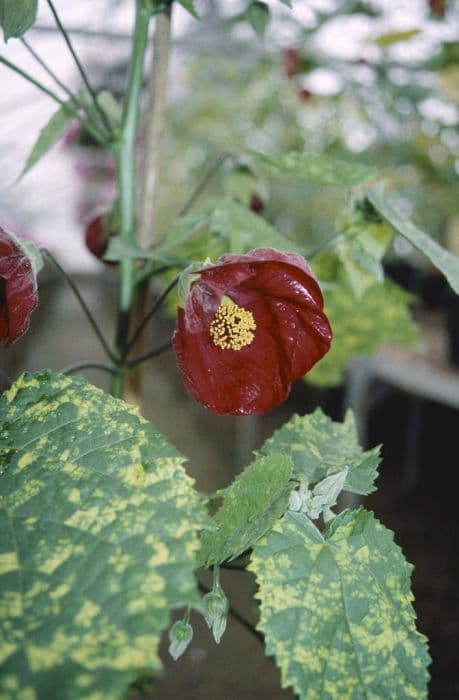
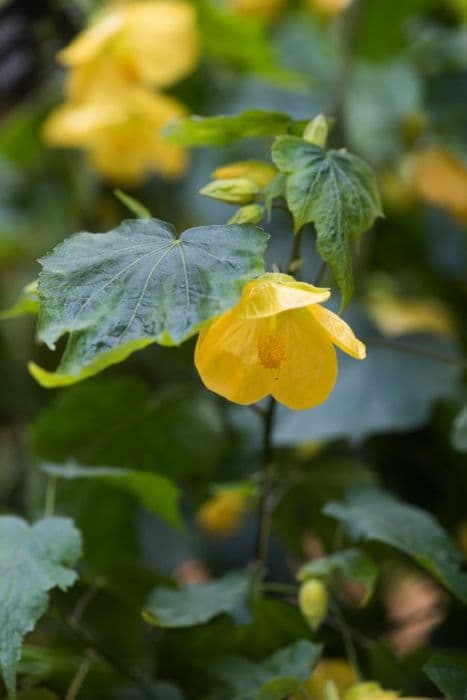
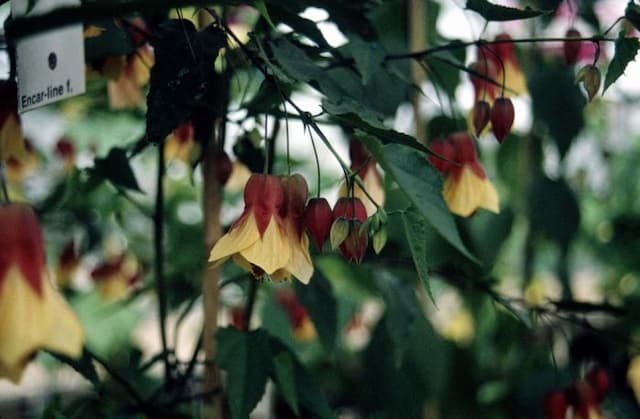
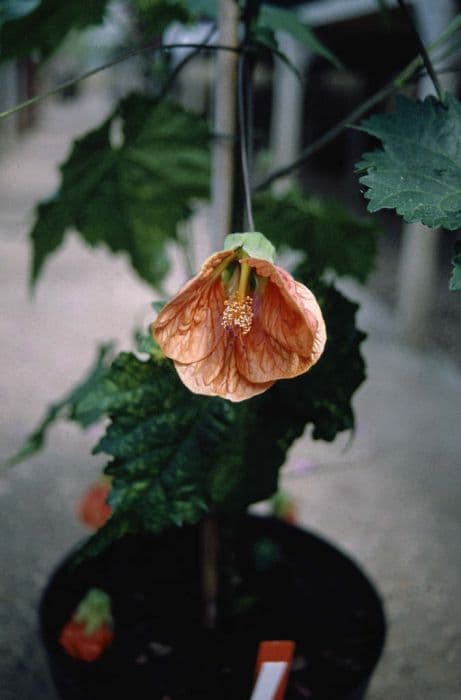
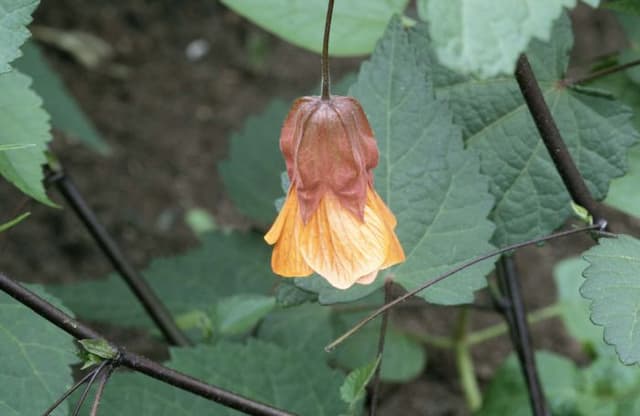

![Abutilon [Yellow Trumpet]](/_next/image?url=https%3A%2F%2Fplants-admin.emdemapps.com%2Fimages%2Fplants%2F%2Fimages%2F604b5caa8b4fb.png&w=640&q=75)

